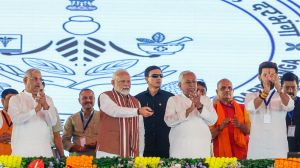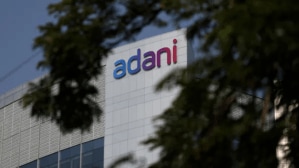Bengal village plays McKinsey script
For years it was a barren sprawl of over 900 hectares—parched, uncultivable. And home to 600 families, a majority of whom live below th...

For years it was a barren sprawl of over 900 hectares—parched, uncultivable. And home to 600 families, a majority of whom live below the poverty line. But this will be the second New Year of hope in a row as a success story unfolds across Bhalki village, 160 km from Kolkata and in Burdwan district.
The script reads straight from McKinsey but, of course, here that doesn’t matter. The local CPI(M) working with an enterprising Block Development Officer kickstarted a Rs 10-lakh scheme of water harvesting and contract farming. And in a state where the word “contract” is still a scare-word, not only has this scheme changed almost a quarter of the village, the Rs 10-lakh investment has built assets worth Rs 2 crore.
Though the McKinsey Report—commissioned by the state government and ready in 2001-02—today exists more on paper thanks to opposition from party hardliners, in Bhalki it’s being put into action on the ground.
In fact, the report’s prescription has been just what the doctor ordered.
The CPI(M) district committee member, Uday Sarkar, says: ‘‘It is unimportant whether Marx or McKinsey played a role as long as we are getting good results from the method.’’ So the villagers are now busy undertaking contract farming and alternate farming, both of which have been recommended in the report.
For instance, 18 bighas of private land, patches of which were barren, have been leased out to a self-help group for cultivating medicinal plants. Now, giving lie to the criticism against alternative farming, the medicinal plants have found a willing taker in a Kolkata-based export house.
The man who conceived the project is a humble officer at the lowest rung of the administrative ladder—a block development officer. Naba Kumar Barman, the BDO, says that he was moved by the poverty in the area and felt the urge to do something. He thought of altervative farming as the land was not suited for conventional cultivation. Besides, the experiment needed a cooperative approach. Barman faced a lot of opposition initially from local political activists and moneylenders. ‘‘But I was successful in spreading the message of development across the village and after that it wasn’t difficult to overcome all obstacles,’’ says Barman.
Initiated by NABARD and Burdwan Zilla Parishad, which together invested Rs 10 lakh to kickstart the plans, the “Bhalki project” has now been broadened to include more villages within its ambit. Villages like Sahebdanga, Suata, Dombandhi and Ausgram are eager to try out the Bhalki model. ‘‘Now that the Bhalki model has taken off successfully, we plan to spread it out to many more villages,’’ says Uday Sarkar.
For Bhalki’s total population of 2,703—50 per cent of which earlier fell below the poverty line—the days of hand-to-mouth existence seems to be over. Alternative farming has ensured that they remain employed round the year and no longer remain vulnerable to the whims of an errant monsoon.
The CPI(M) wants to portray Bhalki’s prosperity as an example of its positive involvement with rural development and is using the village as a ‘‘laboratory’’ for its plans.





- 01
- 02
- 03
- 04
- 05


























